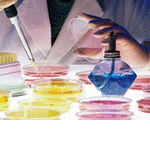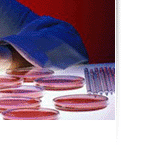Click here to go back.
HARM TO HUMANS
Clearly, animal experimentation does not offer safety assurances or relevant data. On the contrary, applying animal-based information to humans has harmed us and delayed scientific and medical progress. Here’s how…
The antidiarrheal Clioquinol proved effective in rats, cats, dogs and rabbits. When released, it caused blindness and paralysis in humans.
The popular diet drug Phen-fen caused heart disease in humans, after proving safe in animals.
Surgeons accomplished corrective eye surgery in rabbits, but the operation blinded the first human patients. Whereas rabbits’ corneas can regenerate on the underside of the eye, human corneas regenerate on the surface.
Smoking was deemed safe for decades, as laboratories found it difficult to imitate smoking-related cancer in animals. Believing cigarettes to be safe, people continued to light up and ultimately die from cancer.
A chemical found to cause cancer in rats and mice was later found to reduce the size of some cancers in humans, years after it had been deemed useless.
Arthritis medications Zomax, Flosint and Opren caused severe adverse reactions and deaths, none of which were seen in tests with dogs, monkeys and rats.
A headache medication, Methysergide, caused scarring of patients’ hearts, kidneys, and abdominal blood vessels. These reactions were not observed in animal tests, even when doctors returned to the lab to reproduce these effects.
Rezulin, a diabetes medication, caused liver damage in humans, an effect unseen in the animal tests. At least one patient died and another needed a new liver.
A treatment for nausea and vomiting caused irregular heartbeats in humans. Scientists couldn’t reproduce this in dogs, even with 70 times the normal dose.
Dogs also tolerated Mitoxantrone, a cancer treatment that caused heart failure in humans.
Cylert, a drug to treat Attention Deficit Hyperactivity Disorder, caused liver failure in thirteen children, eleven of whom either died or needed liver transplants.
On March 13, 2006, eight healthy men arrived at a research facility in London, England, to participate in the first clinical trial for a drug called “TGN1412.” Two were given placebos. Six were given the drug. An hour and a half after the drug was administered, adverse reactions began to tear through their bodies. “...all six volunteers had a systemic inflammatory response...accompanied by headache, myalgias, nausea, diarrhea, erythema, vasodilatation, and hypo-tension. “Within 12 to 16 hours after infusion, they became critically ill, with pulmonary infiltrates and lung injury, renal failure...” The New England Journal of Medicine Sep. 7, 2006 (See "Animal Research Disaster" link below.)
Human Hybrid Experiments Fail (See "Human/Animal/ Hybrid" link below.)
This is only a small sample of the many times animal data have failed us. When a procedure or chemical is first introduced to humans, it is indeed a test phase. If humans display reactions not seen in the animal studies, scientists return to their laboratories and try to reproduce these side effects in animals. It often doesn’t work. They continue to manipulate various factors, such as concentration and frequency, vainly trying to draw a parallel line between the animals and humans when there isn’t one. Even if they succeed, what does this tell us? Absolutely nothing. Pertinent information is discovered through human observation and research.
Animal experimentation is also dangerous for those who work in these labs. Body fluids of infected animals and injections of harmful substances have inadvertently infected lab workers, sometimes resulting in death. In December 1997, a technician at Yerkes Regional Primate Research Center was splashed in the eye with body fluid from a monkey infected with Herpes B; she died six weeks later as a result. In May 2004 a lab worker in the Vektor Laboratory of the Novosibirsk Scientific Center contracted Ebola Hemorrhagic fever from a needle-stick injury while infecting guinea pigs; she died two weeks later as a result. These are only two examples of the many times lab workers accidentally come in contact with dangerous compounds and diseases as a direct result of experimenting on animals.









